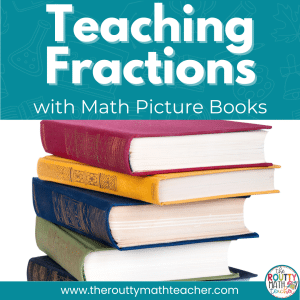
Surviving the Last Weeks of School: How to Keep Your Students Engaged
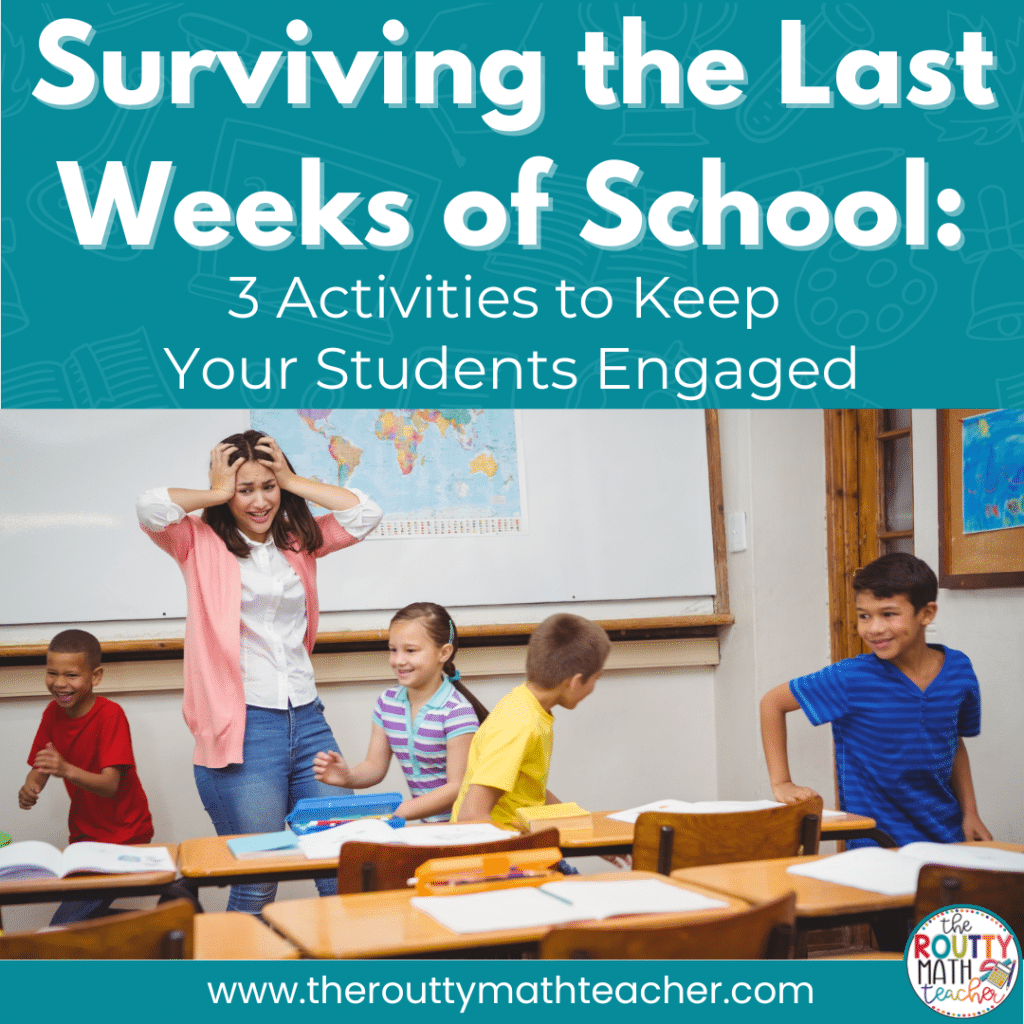

It’s April!! For me this month means a time for celebration—it’s my birth month. For many Americans though, it’s a most dreaded time of the year because it means that they have to send a very large check to the government for the amount of tax debt they did not pay during the 12 months of 2016. For teachers, it means we are entering the home stretch and the last weeks of the school year. Now, any parents who have happened upon this blog post are saying—why is this a problem. But, as teachers, we all know that:
Last weeks of the school year = Crazy time!
Managing student engagement and behaviors at the end of the school year can be a challenge for even our most experienced teachers. Trust me when I say that keeping them engaged is how to win the battle. The more engaged they are in tasks that are both developmentally appropriate and challenging, the less off-task behavior they will display.
Having been an educator for the past 14 years and experiencing 14 end-of-year crazy times, I would like to share some of my favorite problem solving and critical thinking strategies I used to keep my students engaged during the last weeks of the school year.
Activity 1: Weight Logic
This is one of my favorite challenges! Logic puzzles help students develop solid critical thinking and problem solving skills in the early grades. This is essential to support higher-level mathematics in the later ones.
To complete the weight logic puzzles, students use the sum of the symbols shown on the scale to determine the value of each symbol. For many students, this task seems simple. You guess and check the values until you find a combination that works. But that level of thinking is just the beginning. The real critical thinking comes in when students use strategies, other than guess and check, to determine the value of each fruit.
For example, on puzzle #5 (to the top right), if students recognize that the watermelon and two strawberries on the left side are included in the two pieces of watermelon and two strawberries on the right side, they can subtract the 10 on the left from the 12 on the right to see that the leftover watermelon slice has a value of 2. Once they know that, they can determine the value of the strawberry. How’s that for fostering algebraic thinking in elementary school!
For puzzle #6 (to the bottom left), students recognize that there are three watermelon slices on the right whose total value must be a multiple of three. The o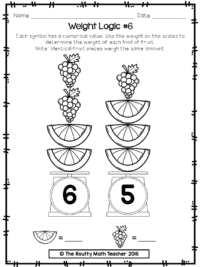
How awesome would our students be if they could articulate that level of thinking? It will take time for students to arrive at these solutions, but once they’ve mastered guess and check, encourage them to look for other ways to solve the problem. Be sure to have students share their solution strategies with other classmates as well.
Freebie Alert! Grab a freebie copy of Weight Logic with Fruit here!
Activity 2: Boggle Math
The next activity is called Boggle Math—similar to the traditional Boggle game except that students create number sentences instead of words. What I love about this activity is that it can be used for several days because students keep challenging themselves to find combinations of numbers that will create a number sentence.
Here’s how it works:
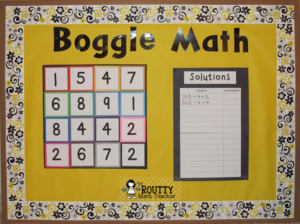
- Create a Boggle board with an empty bulletin board space or on poster board. See the picture below for an example. (Depending on the needs of your students, a larger or smaller square array can be created as needed.)
- Students look for and create number sentences using numbers that are touching in some way, i.e. sides or corners.
- Students earn points based on the difficulty and length of their number sentence, such as one point for each unique operation, one point for each additional number after the first three, and one point for each number that is squared.
This activity is a great way to differentiate for students because the length of the number sentences they create is based on their individual ability and understanding of the task. This activity can also be transformed into a whole-class game where teams of students compete to create number sentences and then earn points based on the length of the sentence.
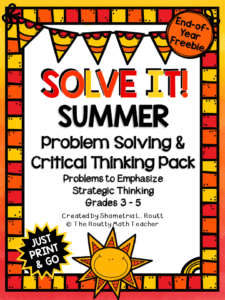
Activity 3: Problem Solving Challenges
If you’ve been a reader of this blog for any length of time, you know that I love problem solving! Specifically, I want to focus on the more non-routine problem solving challenges. These are my favorite type of problems to use in the classroom; however, they do require more time to allow the students to understand and then solve them. Non-routine problems are ones that cannot be solved by simply adding, subtracting, multiplying, or dividing to find the answer. They require students to develop and execute a plan of action and can often have more than one solution.
My favorite way to use them is to find a really good one—one that will take some time to complete and where the solution is not easily determined. I divide students into small groups of 2 – 3 (more than three students in a group creates opportunities for disengagement). I give each group a problem solving challenge, a tub of markers, and a piece of large paper, like construction paper or an old textbook cover (Anyone still have those lying around? The blank backsides are perfect for creating posters!) Once students have their materials, they read the problem, determine a solution strategy, and create a poster.
After all of the groups have completed the task, I have each group display their poster and do a gallery walk to review how other groups solved the problem. Once the students have viewed the posters, we come back together as a whole group and have a math talk to discuss the problem. Here are some of the ideas we discuss during this math talk time:
- How can you decide if an answer is reasonable or not? What would be an example of an answer that is too high? Too low?
- What’s the most effective strategy? Why?
- What’s the most efficient strategy? Why?
- What if a group thought about it this way ________________________ (provide an erroneous solution strategy)? How could you help them get on the right path?
Freebie Alert! Grab a free copy of Solve It! Summer here or click the image above!
With a little planning and creativity, the craziest weeks of the year can become the most engaging for your students. In my own classroom, I planned for a different problem solving or critical thinking challenge for each day of the week and my students spent the majority of their math time exploring the tasks, devising a plan to solve them, and then finding the solution. We spend the rest of the time reviewing content that will be most helpful for the next grade level, usually fractions, decimals, and percents.
Sound Off! How do you survive the last weeks of school?








2 Responses
Great activities for the end of the year math classes. I bet your students love these.
We always play Boggle once our state tests are over. I am going to try Boggle Math this year. Thanks for sharing!